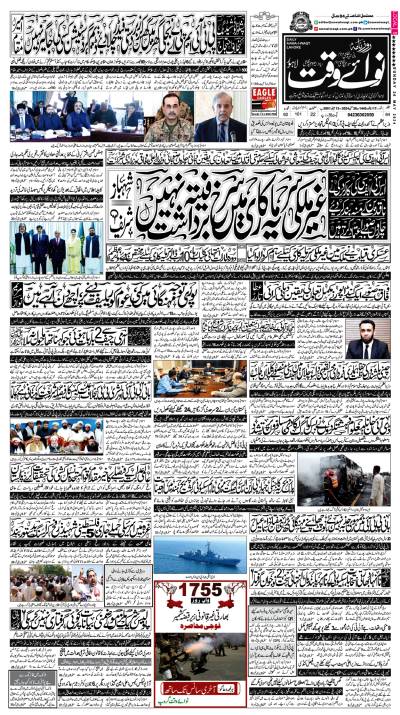Maroof Sani
P
akistan is facing the possible challenge and impending humanitarian crisis of a new influx of Afghan refugees pouring into the country again, with the sudden withdrawal of the United States and allied troops from Afghanistan. According to the UNHCR report, it is expected that up to 700,000 refugees could flee to Pakistan now that the Taliban are back in control. The country has seen an enormous influx of Afghans fleeing for 40 years, starting in 1979, decades before and after the start of the Soviet-Afghan war. Throughout these years, Pakistan has been generously hosting Afghan refugees. However, this time, Pakistan is far more reluctant to host the influx of Afghan refugees due to the political and economic instability that may come as a result.
There are 2.8 million documented and undocumented Afghan refugees in Pakistan, and approximately 1.4 million are registered. Over the last four decades, the number of refugees residing has remained stagnant and, in fact increased. Unfortunately, most refugees are reluctant to go back, mainly due to the security and economic situation in Afghanistan, and now their second generation is also living in Pakistan as refugees.
The Geneva Convention, related to the status of refugees, is the main source of legal procedures for refugees. However, international refugee law does not operate in isolation. It is best understood in conjunction with international human rights law, starting with the 1948 Universal Declaration and international humanitarian law. According to the 1951 Refugee Convention, “a refugee is someone unable or unwilling to return to their country of origin owing to a well-founded fear of being persecuted for reasons of race, religion, nationality, membership of a particular social group, or political opinion.”
Pakistan has not signed the 1951 Convention relating to the status of refugees, nor its 1967 protocol, which removed the geographic and irrelevant limits of the 1951 convention. It is still bound by Article 33(1) of the refugee convention because the right against refoulment outlined has become a binding norm of customary international law. Under this article, “no contracting state shall expel or return (refouler) a refugee in any manner whatsoever to the frontiers of territories where his life or freedom would be threatened on account of his race, religion, nationality, membership; of a particular social group or political opinion.”
Pakistan does not have a domestic legal framework, in its absence, UNHCR conducts refugee status determination under its mandate. Pakistan generally accepts UNHCR decisions to grant refugee status, allow asylum seekers and recognised refugees to remain in Pakistan. UNHCR’s work in Pakistan includes working with authorities to give refugees access to health and education services and strengthening cohesion between refugees and their host communities through different initiatives. In February 2007, the government of Pakistan concluded a registration exercise of Afghan refugees living in Pakistan and issued Proof of Registration (POR) cards for them, which provide temporary legal stay in Pakistan, freedom of movement, and exemption from applying to the Foreigners Act, 1946.
The government initiated this registration exercise in the wake of security concerns. It is yet to be determined how many undocumented Afghan refugees have been registered. Nevertheless, it was the initiation of the process to bring them under a regulatory legal framework. The situation is more complex than it seems as most of the refugees have economically settled themselves and their businesses here, due to which they are unwilling to register themselves, as they are afraid that they might be sent back. Some of the refugees did go back with the support of UN agencies, only to return later saying that the security situation in Afghanistan is still not good enough.
In the wake of this new situation, Pakistan has changed its policy towards refugees by adopting the Iranian model. It keeps the refugees in camps set up along the border and is not allowing them into cities. Refugees may also find the situation different compared to the past at the Pakistan-Afghanistan border as well. Pakistan conducted an enormous exercise to fence its 2,640-kilometre border with Afghanistan, which might also help stop the illegal border crossings. However, it is never easy to seal the Pak-Afghan border due to ethnic Pashtuns traveling between Afghanistan and Pakistan regularly for different purposes.
There is a refugee problem knocking at Pakistan’s door. How many? The number of refugees is uncertain this time. However, it is expected that there can be a formal and informal crossing over of the border. Pakistan must prepare itself to deal with this challenge. It should be ready with its legal apparatus in place. It is important to enact laws that can lay the groundwork for tackling the refugee crisis. It could also help Pakistan in identifying its capacities and limitations to the world. Moreover, with a well-thought out registration process and policies, Pakistan can face the pressure and legally fulfil its international commitments.
Our society and economy have paid the price of an influx of refugees in the past four decades. We learned some lessons the hard way, and it is time that we bring our learning to use and handle the situation in a better way.





